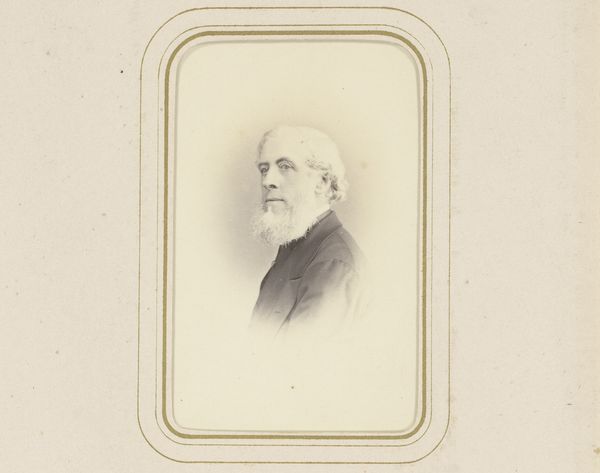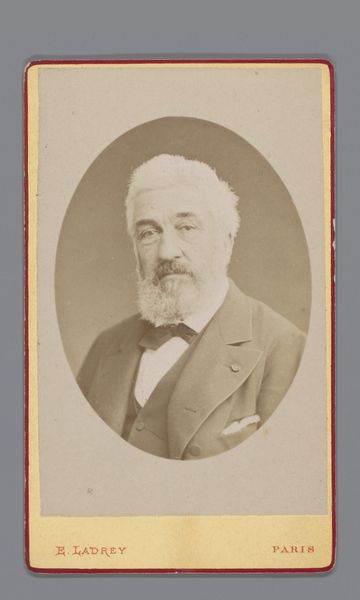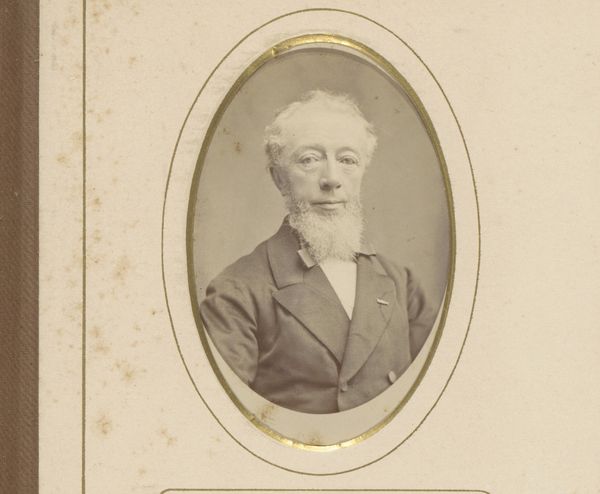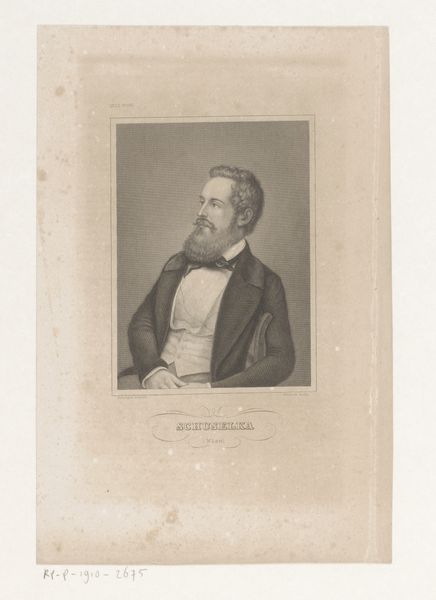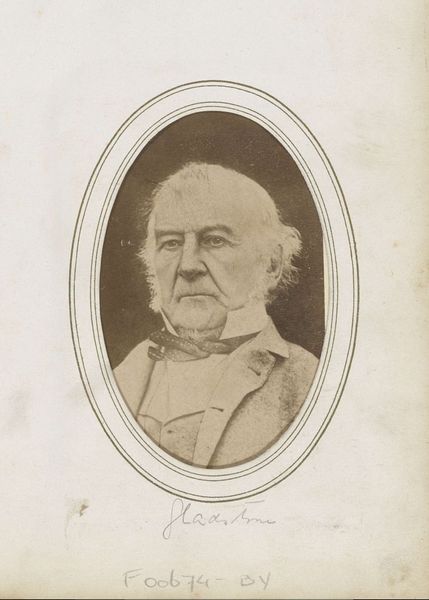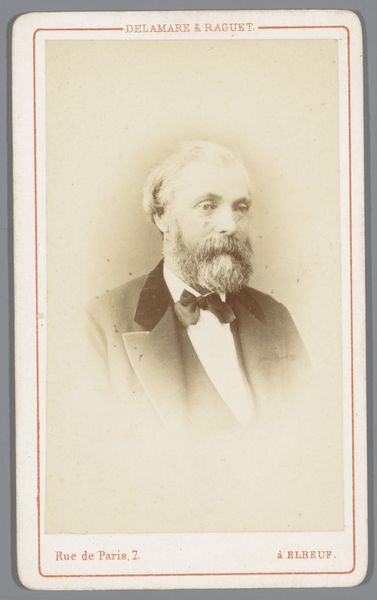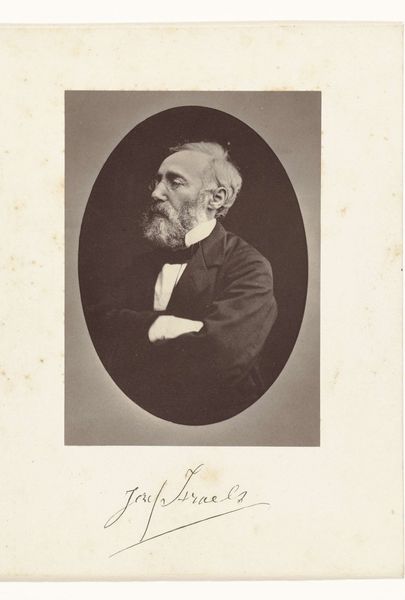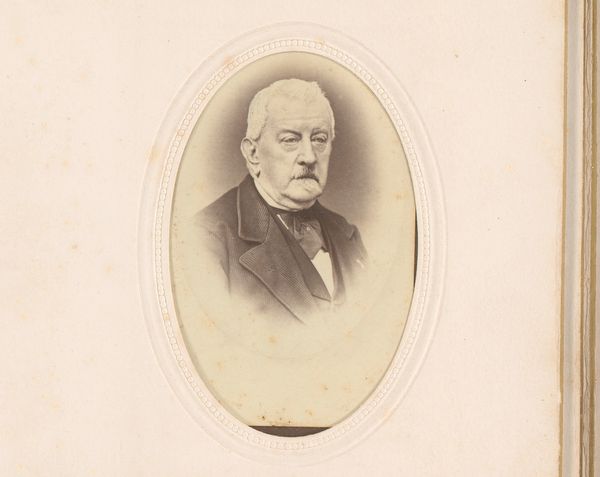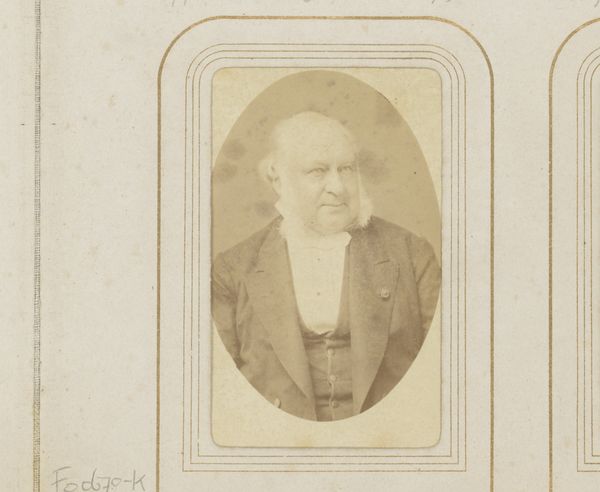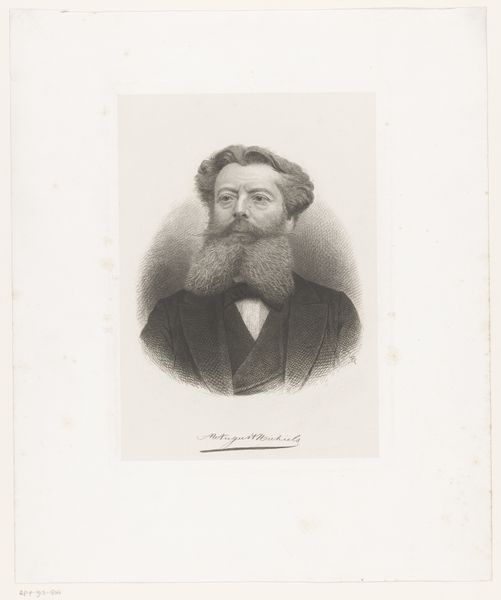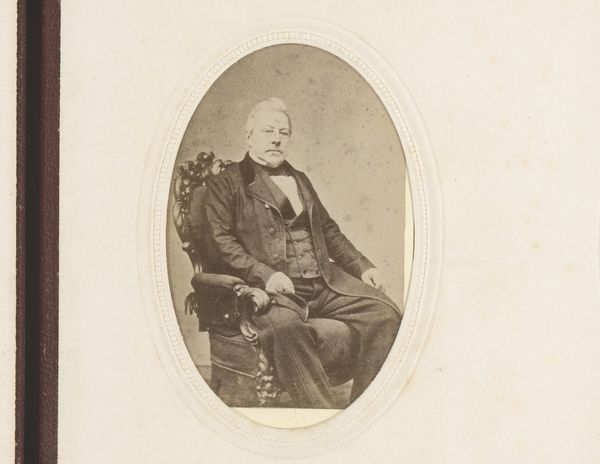
photography, gelatin-silver-print
#
portrait
#
photography
#
gelatin-silver-print
#
realism
Dimensions: height 81 mm, width 65 mm
Copyright: Rijks Museum: Open Domain
Editor: Here we have a photograph from 1888 titled "Portret van Jules Verne." It's a gelatin silver print. The sepia tones give it a very historical feel, and the oval framing draws your eye directly to Verne's face. What stands out to you from a structural point of view? Curator: What immediately arrests me is the geometrical tension within the composition. Notice how the oval portrait fights with the rigidity of the photographic paper and patterned border. The photograph uses contrast to create dynamism. Can you see the relationship between Verne's collar and his hair? Editor: I see what you mean, the crisp white collar mirrors his striking white beard and hair. It's almost like the portrait is structured around these focal points of brightness. How does that visual echo contribute to the overall piece, would you say? Curator: Indeed. Consider the way the photographer manipulates light to create depth. The varying degrees of grey delineate shape, form, and shadow across his features and clothing. It isolates Verne into shapes that make the subject visually understandable. Does it elicit an emotional reaction, considering this approach? Editor: Definitely, stripping away some of the detail focuses the viewer's attention on the stark visual forms which evokes a more detached sense of reverence and objectivity, fitting for a formal portrait. Curator: Precisely. The realism provides detail to draw the viewer in. But there is also abstraction happening in its raw forms which is an emotional expression too. So it is a balance between realism and reduction. Editor: That's a great way to put it; seeing the relationship between raw components is illuminating. I hadn't considered how the visual dynamics played with each other in such a sophisticated, yet subtle way.
Comments
No comments
Be the first to comment and join the conversation on the ultimate creative platform.
